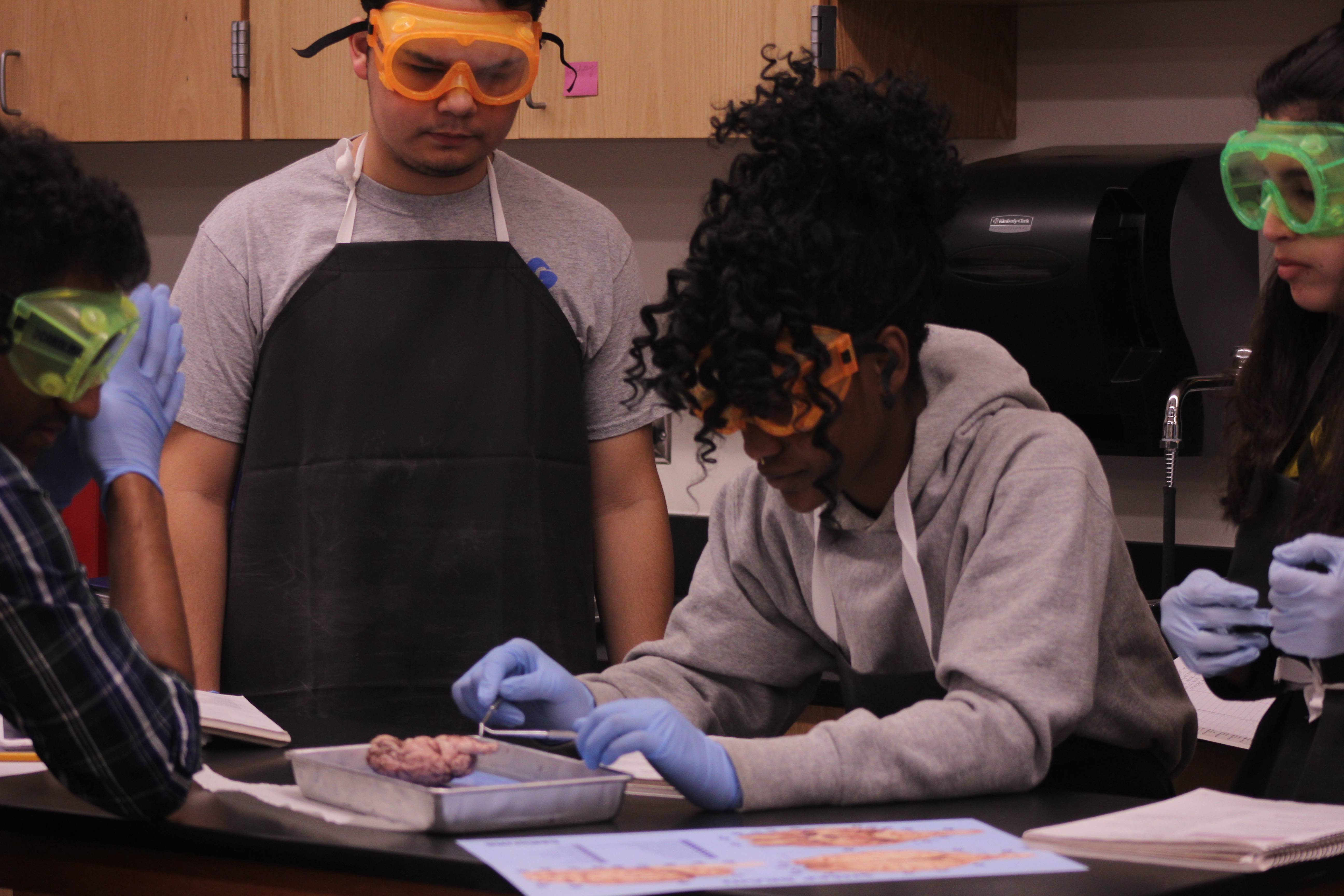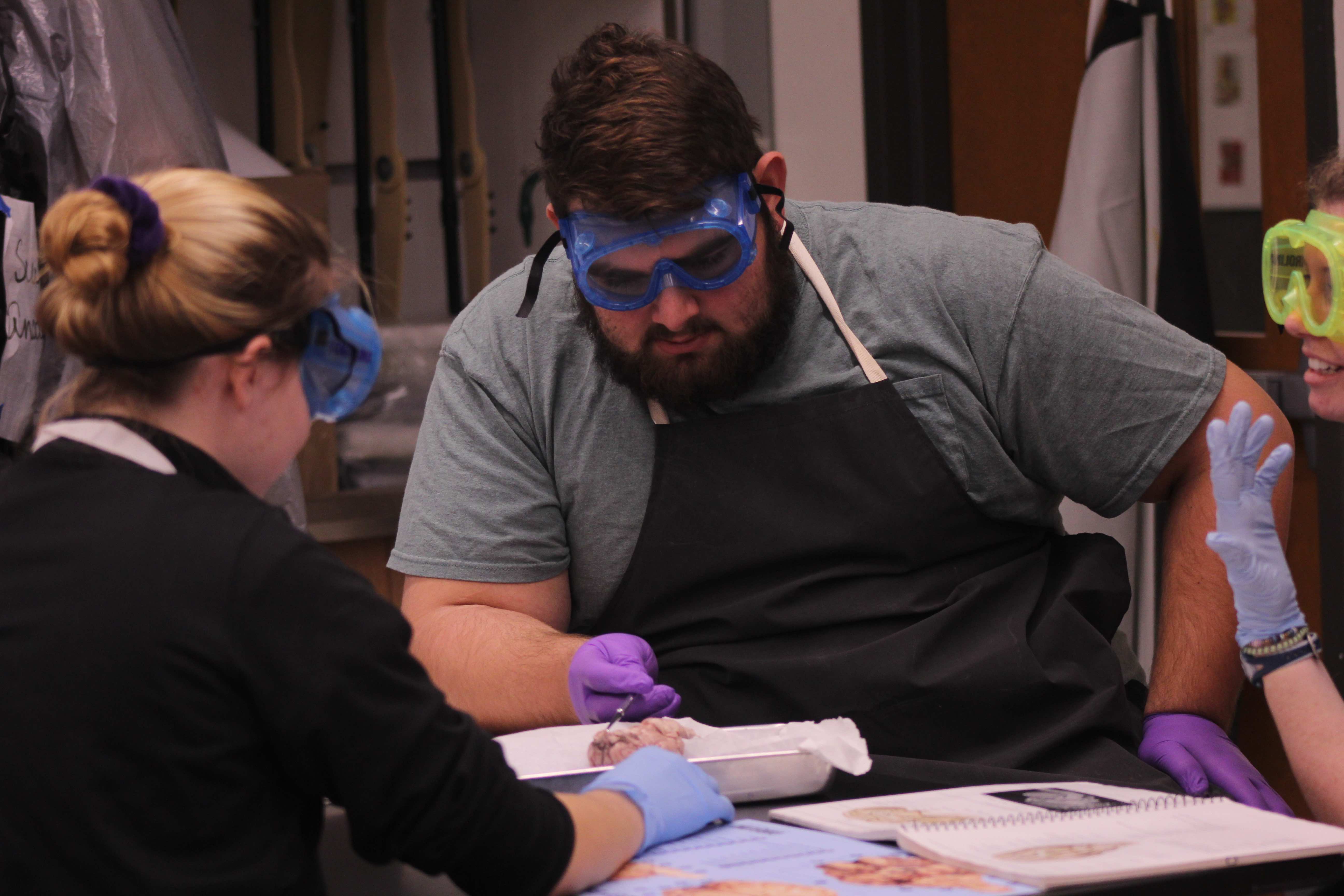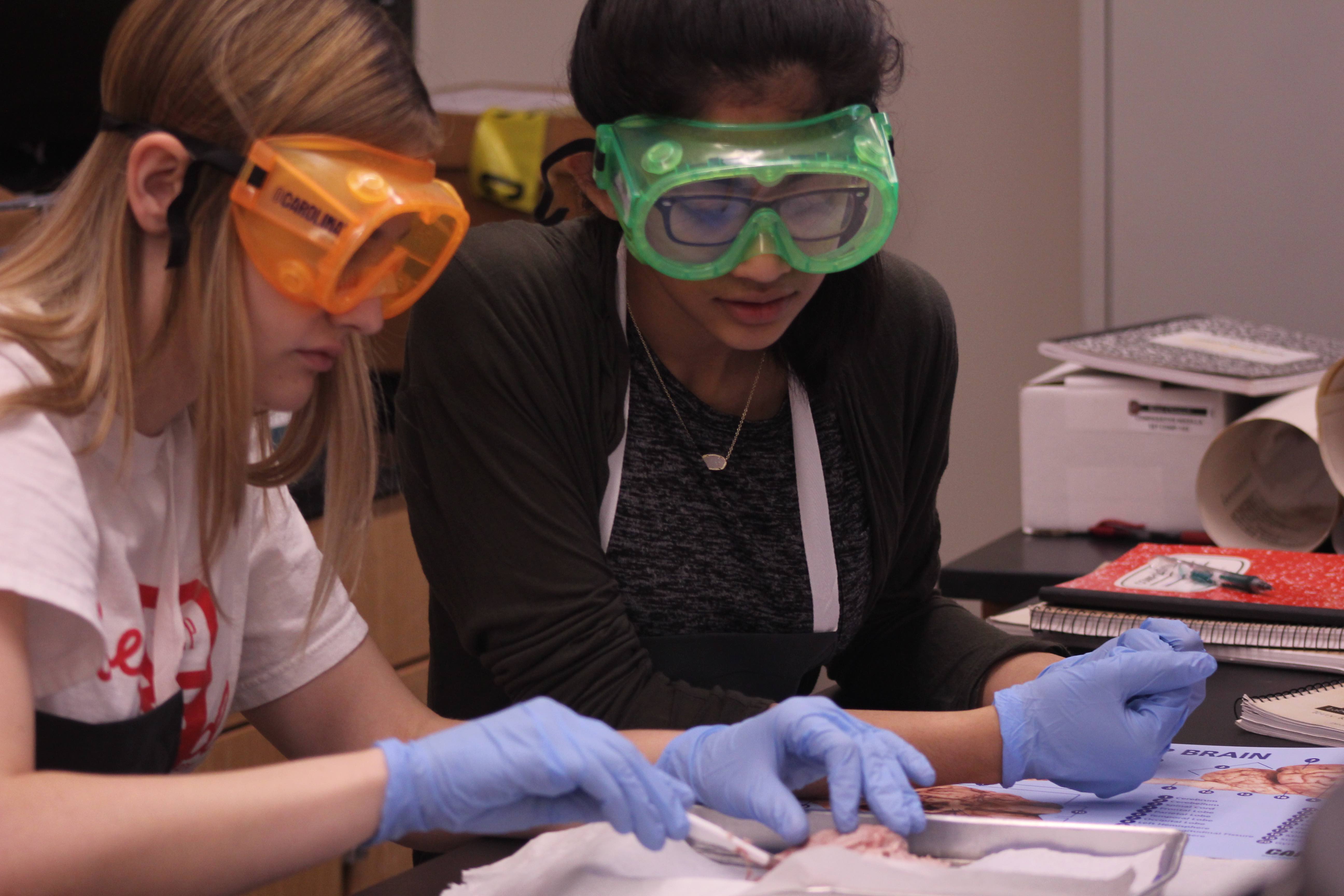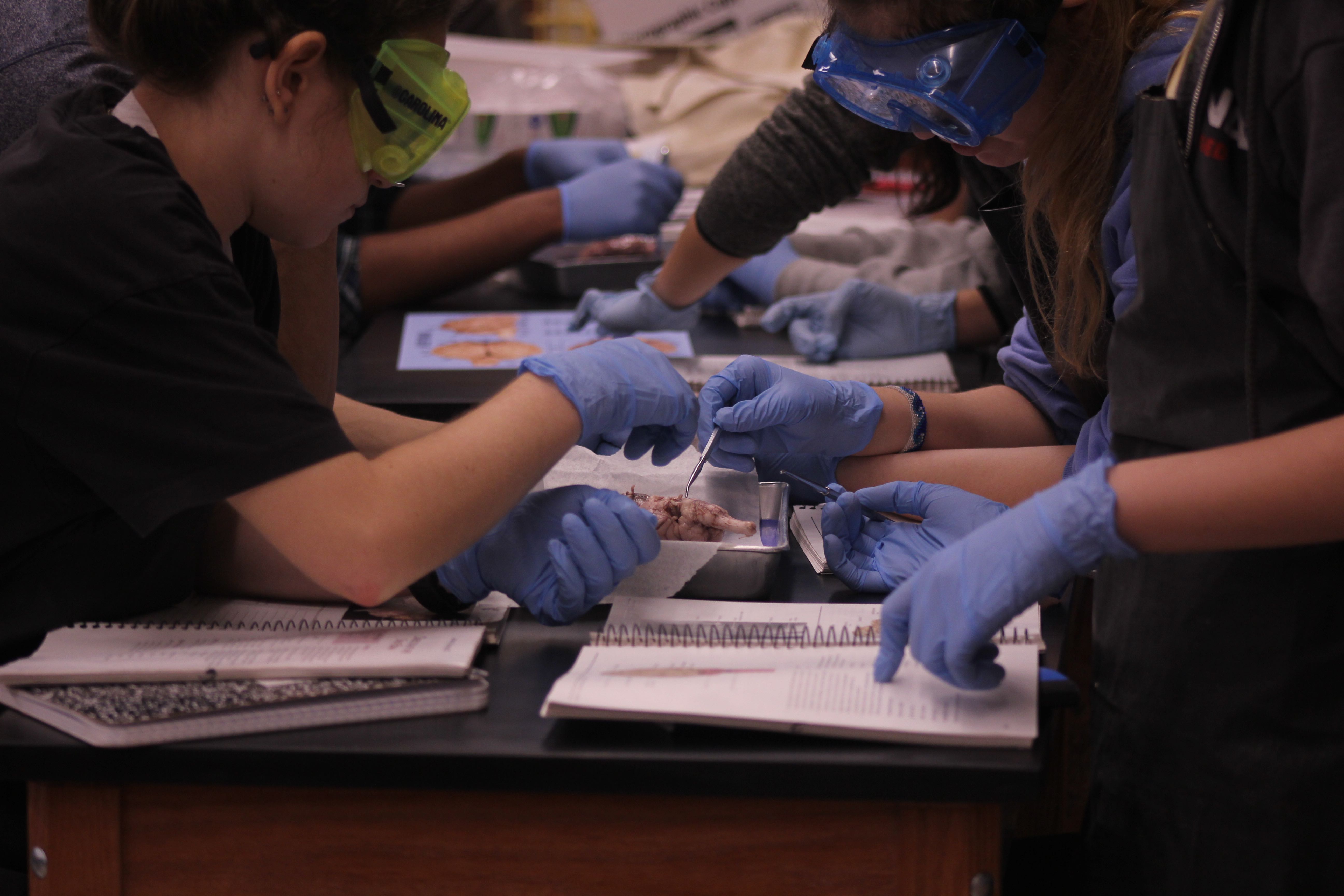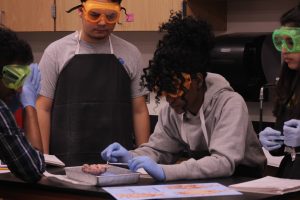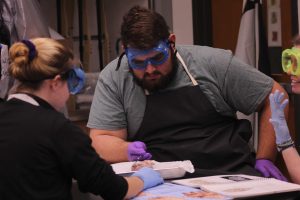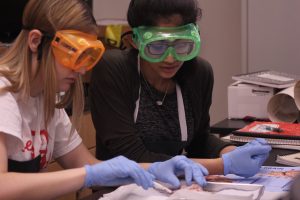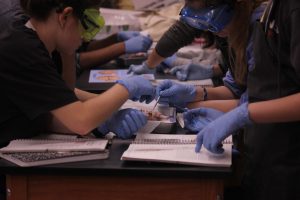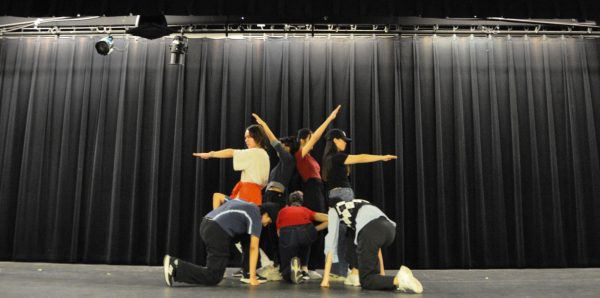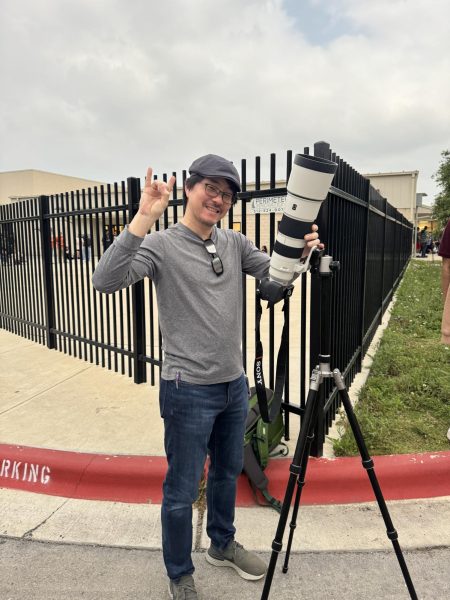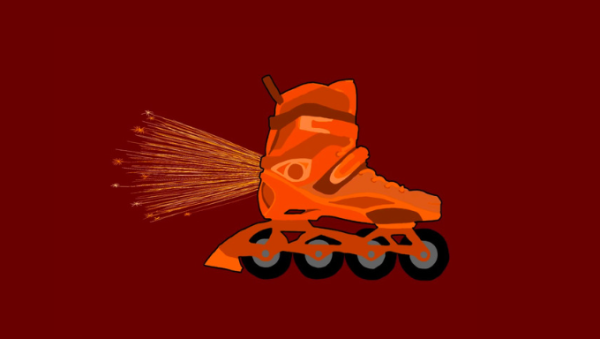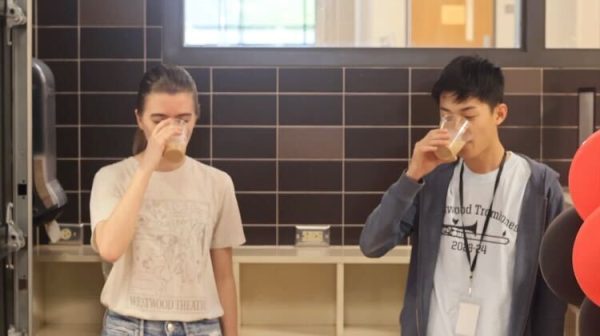Anatomy & Physiology Classes Dissect Sheep Brains
While studying their unit on the human brain, Ms. Susan Seale’s Anatomy & Physiology class dissected a sheep brain on Feb. 6-7 to better understand the structure and functions of a human brain. Students from each class split up into groups of three or four and began by identifying parts of the brain. They were then provided with a scalpel, and performed the dissection to reveal the midsagittal section of the brain.
“I enjoyed learning more about the brain, it was interesting but also kind of gross,” Ashley Enyeart ‘17 said. “I like hands on type stuff, so it was a lot easier to be able to do the lab and dissect that way rather than looking at a picture.”
Following the dissection, students filled out their lab report — one of many this year. Previous labs include a dissection of a rat brain, which proved much more challenging than the sheep brain.
“It was quite different from the rat [brain dissection], the sheep’s brain was more similar to a human’s compared to the rat’s,” Alexis Conerway ‘17 said. “We had the skull still on the rat, so we had to pry through the skull to get to the brain.”
While completing the dissection, students were able to familiarize themselves with the functions of the brain. A majority of the students took the class as a way to get a glance into what the medical field could offer them.
“I really liked exploring how the brain worked and seeing the different parts,” Arooshi Yakkanti ‘19 said. “You can take what you’ve learned and apply it to the brain and see where everything is. It gives you more of an idea of what the medical field is like.”
As the class continues their study of anatomy and physiology, they will be dissecting cow eyes and sheep hearts, and will wrap up their studies with the dissection of a cat to see all the comparative body systems.
“The most exciting part of it for me and for them is when they’re able to take what they’ve talked about in psychology and actually see it in anatomy,” Ms. Seale said. “You can talk about it but seeing and handling it are different things. This gives them a chance to actually see the three dimensional structures.”

When I'm not in school, I spend my time figure skating and coaching skaters of all ages. I'm absolute trash for all stuffed animals, and sometimes I'm...

I mainly write and take pictures for the sports section, but I'm a sucker for quizzes and controversial political issues. I couldn't tell you what my favorite...

